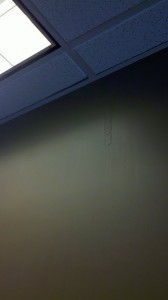Entries tagged with “iaq”.
Did you find what you wanted?
Wed 17 Sep 2014
Posted by admin under AIHA, Asthma, Building Survey, Engineering Controls, Hazard Communication, IAQ, Management, Mold, odor thresholds, Olfactory, Uncategorized, ventilation
Comments Off on Indoor Air Quality- dirty sock syndrome
Do you smell dirty clothes in your indoor building? Do you suspect your heating ventilation and air conditioning system of causing the smells?
It might be what’s called, “Dirty sock syndrome”. Typically found in high humidity locations. A brief video overview can be found here (You Tube 2:03)
Lawrence Berkeley National Laboratory has good information on indoor air quality and how it affects people as they work. They also have some scientific information about how improving the indoor space (by ventilation, temperature, particles, etc) can create a better environment.
AIHA has a “Position Statement on Mold and Dampness in the Built Environment” (March, 2013). Â It lays out the reasons to control moisture in a building, and some basic steps for remedy (spoiler: air sampling doesn’t usually help).
Bottom line: Check your coils before replacing your entire system. Replacing these might be cheaper. Or, sometimes they can be cleaned, but it is a strict protocol. One possible solution is here (I do not endorsement, or recommend this particular product/brand. Do your own research).
Unfortunately I have no problem finding an appropriate picture for this blog on Ebay. People are weird. Yuk.
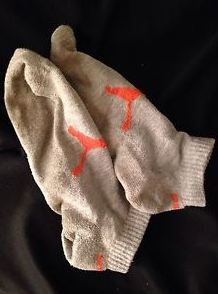
Wed 10 Jul 2013
Posted by admin under Asbestos, Asthma, Building Survey, Chemical Exposure, Exposure, Formaldehyde, Gloves, Health & Wellness, insulation, Lead, LEED, Mold, radon, Risk, ventilation
Comments Off on 7 air pollution hazards in your home
Industrial hygiene (aka occupational hygiene) focuses on occupational-related diseases due to many reasons.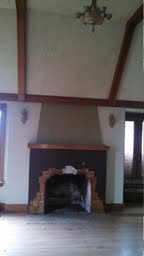
Have you considered, at your home, maybe even as you sleep, you might be exposed to something hazardous? Below are seven possible hazards in your home (related to IH):
- Radon. It comes from the ground and they say it causes cancer* (*some people question this toxicological data). You must perform a test to know if you have hazardous levels.
- Formaldehyde. If you have a newer house you have 2 things going against you: 1. your house is tightly built (no air leaks and limited fresh air) and 2. more particle board (recycled wood) was used in construction. Also, many furniture contains multidensity fiber wood (MDF) which off gas formaldehyde. Again test for it to know if you have dangerous levels.
- Lead. Is your house built prior to 1978? It probably has leaded paint. Any remodeling might distrupt it and you can expose your kids to lead.
- Isocyantes. (HDI, TDI, MDI, and others) Can cause asthma & respiratory issues. If your house was insulated with spray foam (polyurethane type) it needs to off-gas for awhile before you move right in.
- Asbestos. Causes cancer when airborne. If your house was built prior to 1980, you might have asbestos in your pipe insulation, popcorn ceiling, etc. Be sure and have it checked prior to remodeling.
- Mold. Respiratory diseases.
- Cleaning products. The symptoms can vary depending on the type of chemicals in the product. Use the recommended gloves, eye protection and respirator, if necessary, while cleaning with chemicals.
Do not be overly concerned about any one thing. Simply test and make any necessary adjustments. However, do keep in mind that most health recommendations for substances relate to normal working adults who go home to a non-hazardous place. There can be issues if you are either: not considered in the general population of healthy workers and, you go home to a place that isn’t free of additional hazards.
Mon 28 Jan 2013
Many times an IH is called upon to determine the cause of a person’s ailing symptoms. For example, an employee might complain of congestion, irritability, bloody nose, etc. Someone has decided it might be from their exposure at work.
The practice of industrial hygiene is difficult to apply to an individual. What I mean is, this field of study was developed due to serious health concerns over a population of people at work. This is essentially how science works, you take a population, study it, find the differences, then make conclusions.
Trouble occurs when you try this backwards. If the same person (as example above) complains of congestion, irritability, bloody nose- can we assume they must have exposure to lead dust? Not usually. We must obtain other clues.
What industrial hygienists try to do in these instances is rule-out the possible over-exposures. Sometimes we can measure for chemical exposures to see if it might be of concern. But even then, it’s not fool proof. Below are a few issues which make it complicated.
- exposure at work? job? extracurricular activities? home?
- person might have autoimmune disease and gets sick easier
- sampling is not feasible
- sampling is somehow screwed up (by IH, lab, mail carrier)
- exposure is through food, clothing, etc.
Even with these fallacies, there are things an individual can do to narrow down their ailments:
- create a log. time, type of symptoms, pain scale, others experience/smell, food eaten
- change things and see if it improves/makes it worse
- research – but do it right. Look at the items you use, check the SDS
Thu 5 Apr 2012
Posted by admin under IAQ, Mold
Comments Off on Indoor Air Quality & Mold – What to do?
As continued from my earlier post, and, a little more to the point…What do you ACTUALLY do when you think you have mold?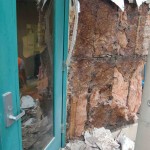
Test the air! Perform air monitoring for as many different things as you possibly can. Just kidding. Actually, DON”T do this. (caveat: if you plan legal action-then you might do this)
If there is visible mold/fungus. The first step is to find the water. Â In order for mold to grow it must have moisture and a place to grow. There are many places to look including; the roof, windows, seams, ANY penetrations into the building envelope, from below (seeping up), water lines, A/C units, condensation, etc. You absolutely cannot fix the damage or test the air until you stop all sources of water.
Second step, assess the damage. The general rule of thumb is if the damage has altered the substrate (ie, the wood is damaged) then you need to replace it. If it is only on the surface, it may be possible to just clean, dry and seal it. If it is more than 10 square feet of damage, consider hiring a qualified specialist.
Thirdly, repair & replace any concerned areas.
Fourthly, dry it thoroughly, then seal it. Look into methods to increase the ventilation into this area.
Fifthly, inspect and finish. A good visual inspection is far better than air monitoring. If you can still see mold growing, you’re not done.
Finally, clean the ducting & surrounding areas. Please choose a qualified inspector. For some reason this industry attracts lots of bogus contractors.
Air sampling vary rarely gives you any information that will assist you in these steps. Some other good information about indoor air quality and mold from California can be found here.
Thu 29 Mar 2012
Posted by admin under IAQ, Management
1 Comment
I have never (as of yet, knock on wood) heard a construction worker say, “you know, Mr. IH, Â the air around this construction site is moldy, dirty, full of fungus, and smells. I’m not sure I can work here”. Never heard it. It’s probably because these guys (& girls) are so tough! Right?
More commonly what I hear in construction is:
- I’ve got a client who has some water leaks, what should we so?, orÂ
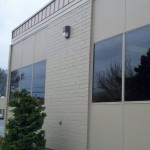
- What can we do to help them?
- How much mold can my employees remove?
- Is it OK for my employees to remove moldy building materials?
The most important thing is: make a decision about what you will allow (as a company) your employees to do? What business are you in? Will you let an employee take out a sheet of moldy wallboard? Will you allow them to demo an entire bathroom with black fungi all over the walls?  There are some guidelines (page 2) and here. OSHA does not have specific rules for this type of work. However, OSHA (and you) will be concerned if your employees are exposed to this type of activity. They will cite you under the general duty clause.
So, the next decision is what level of protection (level A? full face respirator? paper dust mask?) will my employees need to wear? again, it depends (see link above). But as a general rule and in most scenarios, a full face respirator with HEPA filters is perfect. A half-face is fine, at times, but the eye protection during construction is easier (less fog on your safety glasses) if you are wearing a full-face.
Finally, decide if you will either:
- clean it (guidelines here)
- replace it (tear it out, and build new)
- subcontract it (please, use a remediation contractor, not your brother in law)
This will depending on many factors including; size of damage, where the damage occurred, access, available workforce, etc.
Stay close, I will attempt to blog more about this topic in the coming weeks.
